Cа́мбо (Sambo) or samozashchita bez oruzhiya: self defense without weapons. The foundation of Sambo in the 1920s against the backdrop of political turmoil and the Red Army's unarmed combat preparations is an incredible story of survival and endurance.
Two Russian martial artists, namely Viktor Spiridonov and Vasili Oshchepkov who were both recognized sports coaches and merited wrestling masters in the USSR, have been credited with the conception of Sambo, although in all likelihood, the pair never actually met or even developed the fighting system together. In fact, Spiridonov was opposed to Oshchepkov's methods and objected to the police and militia being taught this version of self-defense.
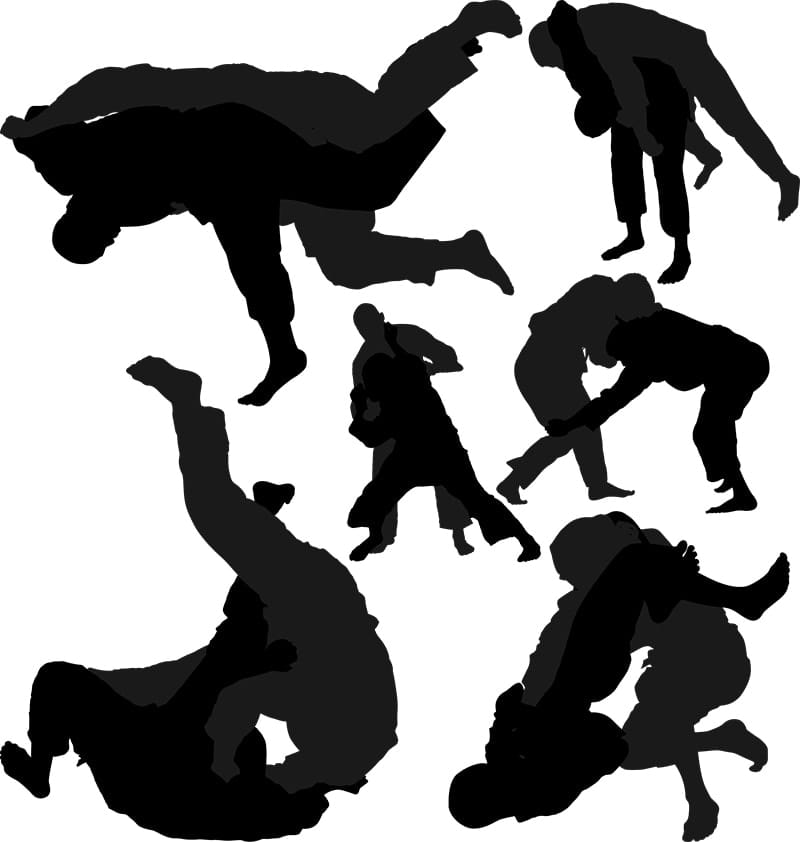
He cited a contradictory style conflict as his objection, and in an act that was seemingly out of character, he gave an official order to have Oschepkov's instruction program shut down.
However, by this time both men's combat ideas had already been incorporated into a fighting system adopted by the military, which invariably Sambo emerged from. Nevertheless, Oshchepkov's Kodokan Judo techniques are probably the more likely to have survived the arguments and crucially, the test of time.
What we see today is the evolution of a Russian combat sport that was born in fairly adverse conditions, but it remains a tribute to the founder's devotion.
Two Courageous Pioneers Defy The Overwhelming Odds Against Them
A stark contrast of opinion regarding fighting styles wasn't the only contradiction to surface in this story. Both Oshchepkov and Spiridonov suffered a degree of hardship along the way, which somehow seems to be linked to a shared passion for martial arts, but their Soviet status was vastly different indeed.
Although the exact details of their backgrounds are a little sketchy in places, Spiridonov volunteered for military service and was a decorated war veteran, but he was badly wounded in battle and was unavoidably dismissed after spending a year in hospital recovering from his injuries.
Oshchepkov, the son of a peasant class Russian citizen, was orphaned as a child and sent to study in Japan at a theological seminary, which later allowed him to serve as an interpreter in the Russian counter intelligence service. They were both instinctively drawn into sports instruction as a natural progress of their career development.
At the time, normal life in Russia wasn't that easy as bureaucracy,and social reform overshadowed just about everything including the availability of food, and the prospects for young men were few and far between.
We have to bear in mind that home comforts of any kind were virtually non-existent, and for most, life was as tough as it gets with little hope of relief. In general, it was a matter of survival and trying to endure the brutal and oppressive conditions. Military life—for some—offered the possibility of escape,and learning to take care of yourself during a combat situation paid untold rewards.
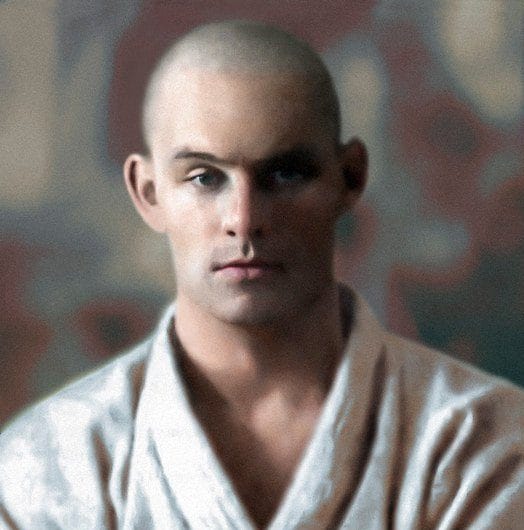
Vasili Oshchepkov
Being able to fight at close quarters not only improved your overall chances of survival but more importantly, brought you to the attention of the authorities, and this is more or less what happened to Spiridonov and Oshchepkov, albeit in slightly different circumstances.
Essentially, Viktor Spiridonov and Vasili Oshchepkov developed their own martial arts fighting systems. Spiridonov favored traditional wrestling and boxing techniques, and Oshchepkovhad an affinity with the Judo that he'd mastered during his time in Japan.
Over time, the Russian Soviet Federative Socialist Republic government's policy demanded that Vsevobuch (Universal Military Training) was compulsory, and close to 10 million Russian citizens were trained between 1941-1945. The Red Army and the Police, along with various other Russian agencies, were encouraged to practice "protection and attack without weapons".
The two fighting styles that Spiridonov and Oshchepkov advocated were both practiced under their direct tutelage. Ultimately, the result was a fusion of their styles, which over time became a documented complete fighting system known as Sambo.
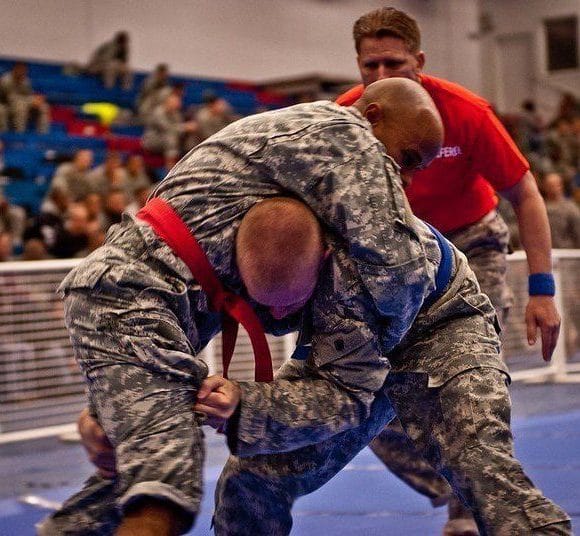
Kano Jigoro –The latter-day Influencer
While Kano Jigoro didn't have access to the internet, his influence has clearly been the inspiration behind a multitude of other splinter martial arts including Sambo. Part of Vasili Oshchepkov's education in Japan included his admission to Kano's Kodokan Judo Institute in Tokyo.
Vasili became only the third European and the first ever Russian to get nidan in Judo. As a consequence of Oshchekov's studies in Japan, he became a fluent Japanese speaker, which gave him access to a wider spectrum of opportunity in Russia.
The Great Purge & the Birth Of An Official Sport
On occasion, the real life bravery of many ordinary people is both incredibly inspiring and utterly admirable.
The legacies that some of them have left behind live on, which is principally a fundamental part of martial arts, and Sambo is a perfect example of the imbedded philosophies that carry a master's spirit through time. There have been many dark and terrifying moments in the world's history and the 'Great Purge' in Russia during 1936-1938 was one of them.
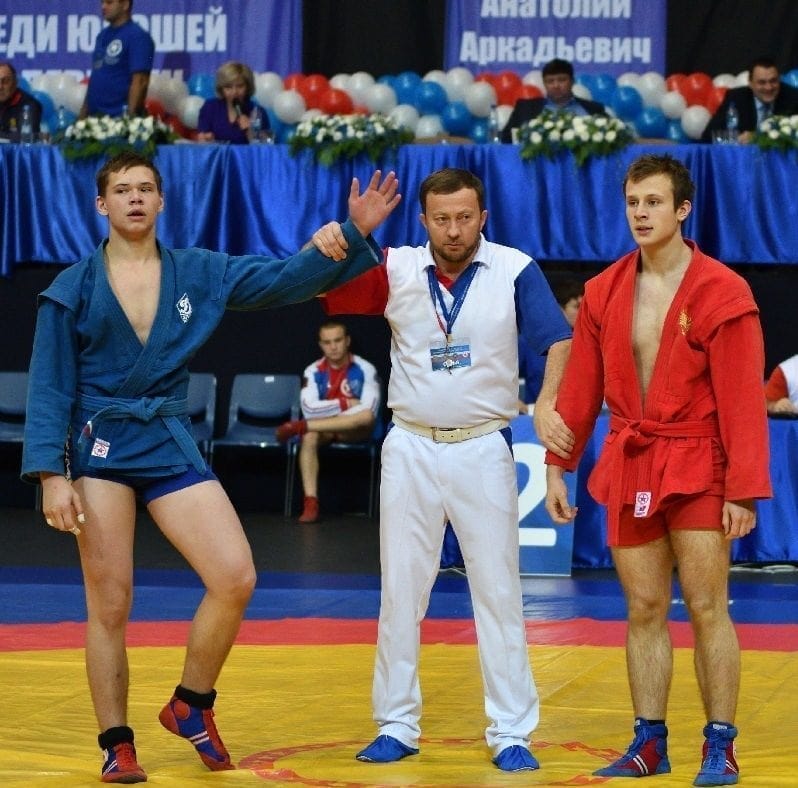
Competitions Sambo in the Championship of Russia
Much like McCarthyism in the US, the Soviet Union waged a campaign of political repression. Widespread paranoia and unfounded wild accusations of spying were rife, which at the time, suited Stalin's objective to eliminate his political adversaries.
Even the remotest deviation from Russian norms would be investigated, and unfortunately, speaking Japanese made you a suspect. On a regrettable night in October 1937, Vasili Oshchepkov was subsequently arrested and imprisoned at the Butyrka prison.
The official report accused Oshchepkovof spying for Japan, and during his 10-day incarceration, he died of a heart attack. In fact, the ugly truth is that he was shot and killed for fraternization with Japanese Imperialists. Nevertheless, in spite of the impossible odds, the legacy has survived, and now all over Russia, martial arts clubs organize Sambo competitions in memory of Oshchepkov.
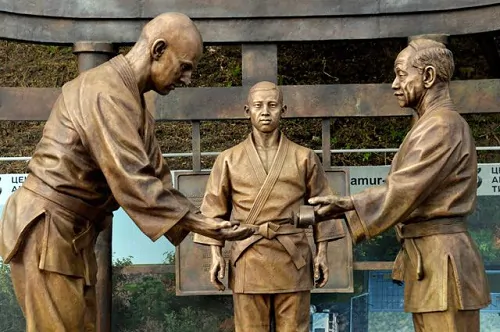
Sambo Founder Oshchepkov Memorial at Vladivostok, Russia.
In 2012, to celebrate the 120th anniversary of Oshchepkov's birthday, Russian and Japanese Judokas came together at Vladivostok's sports center in his honor. Although the history of Sambo has been relatively short compared to others, the events that unfolded during this time are quite astounding.
Fittingly, the first Sambo world championships were held in October 2014 in Tokyo, and in September 2016, a sculpture commemorating Oshchepkov’s life and his dedication to martial arts was erected outside his, and Russia's first, Judo school.
